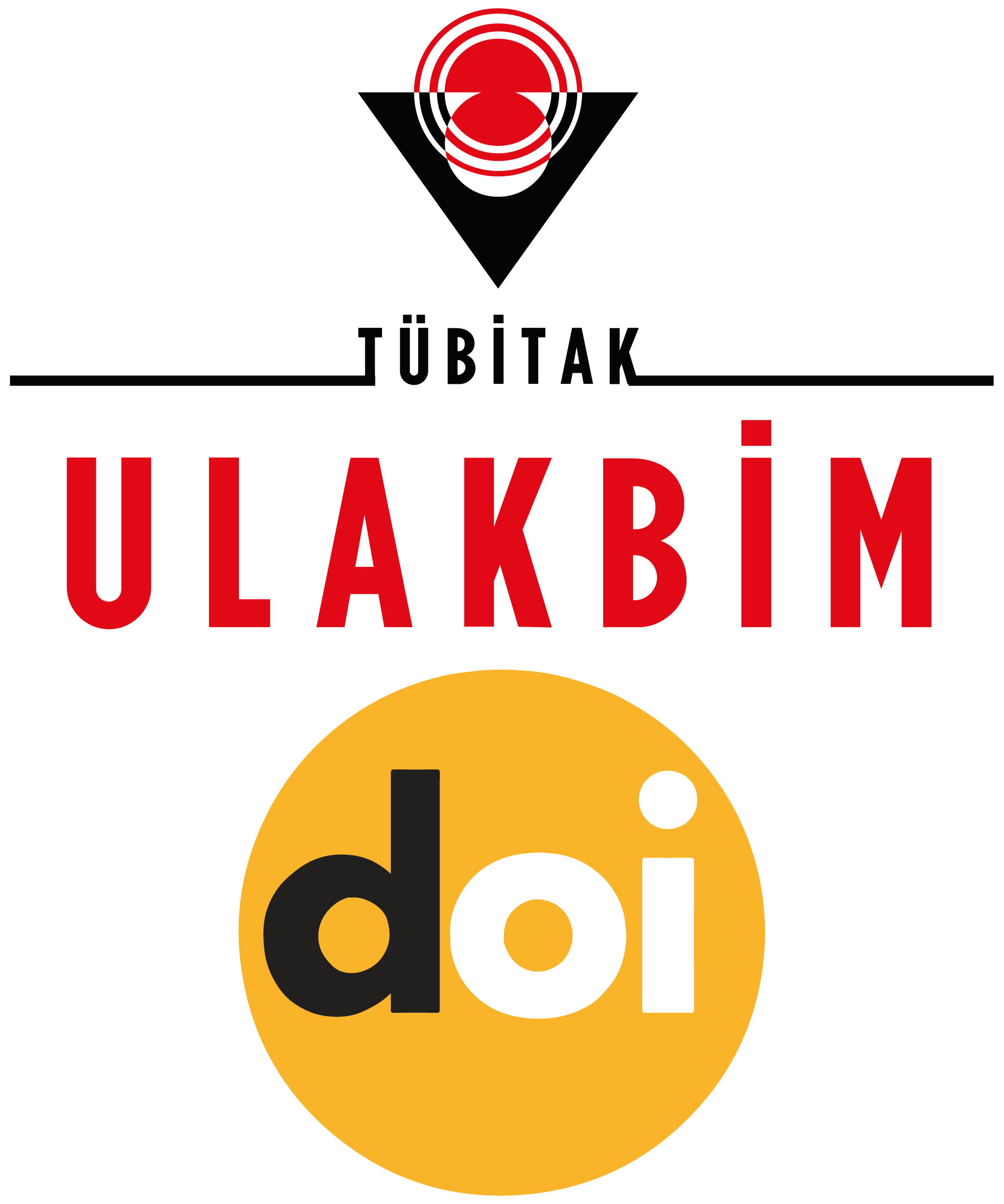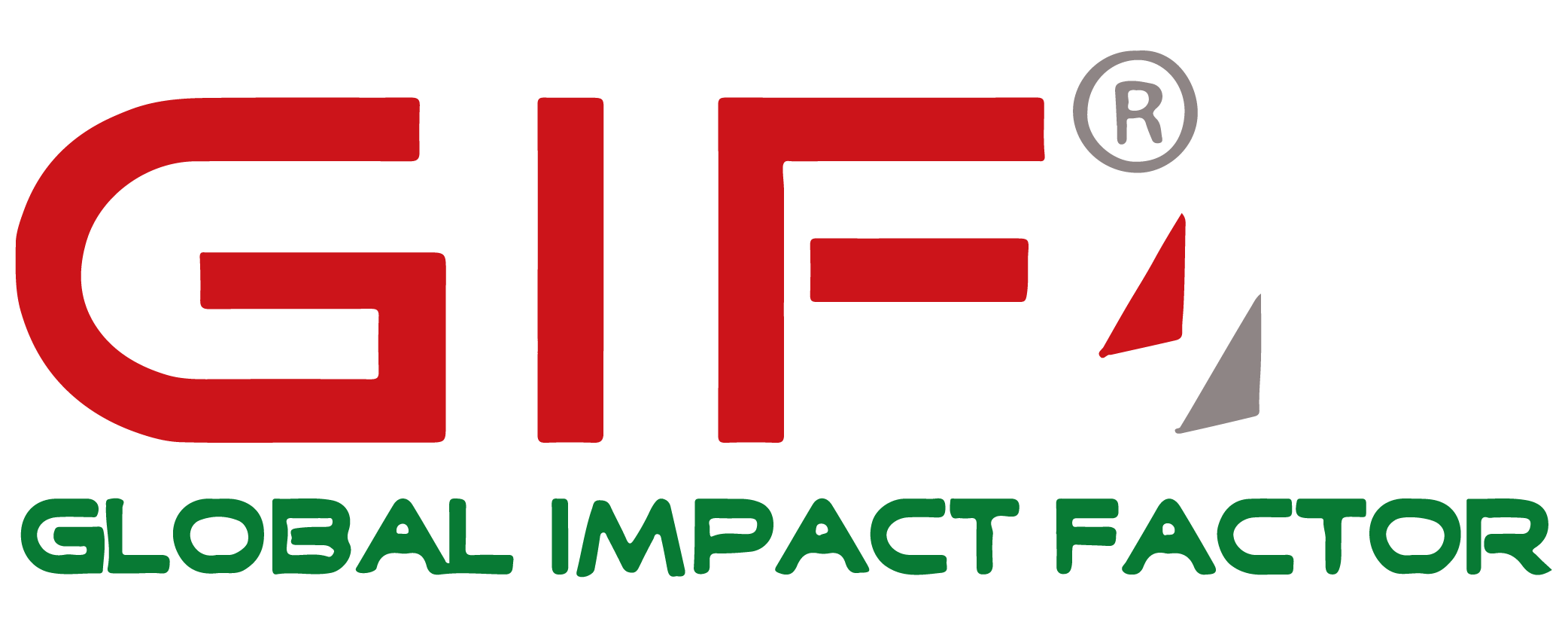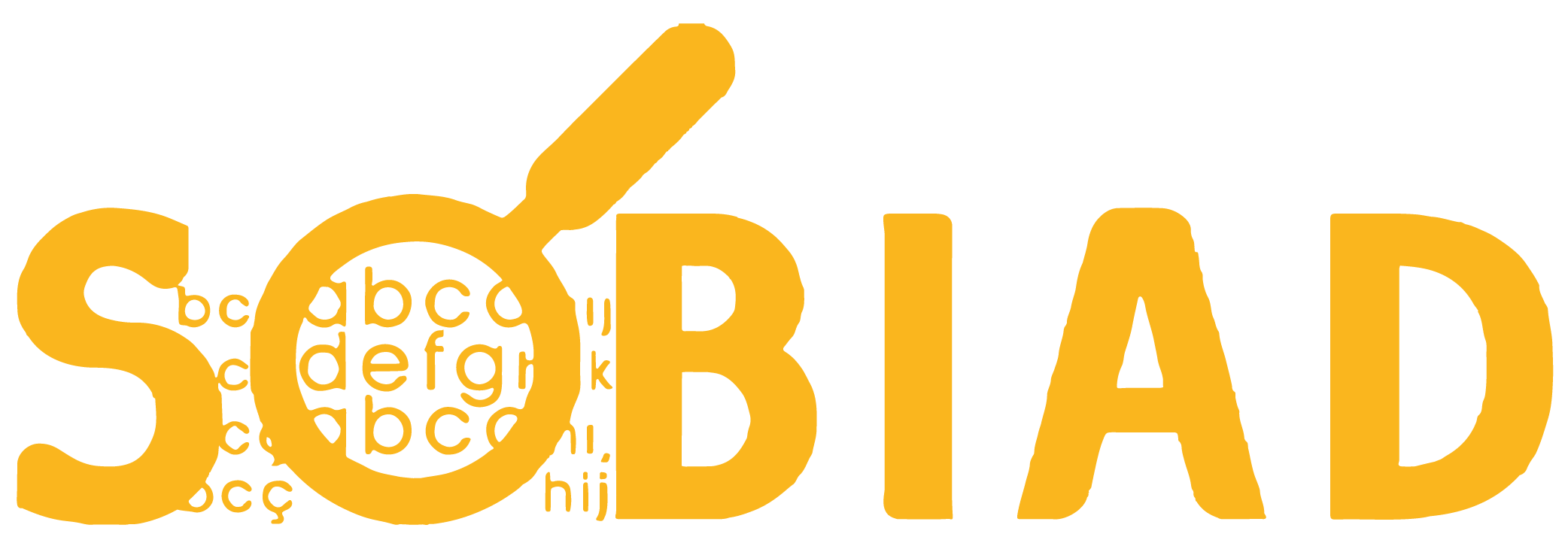Kruvaziyer Şirketlerinin Web Sitelerinde Semantik Uyum Analizi ve Ontoloji Tabanlı Bir Yaklaşım (Semantic Alignment Analysis of Cruise Companies' Websites and an Ontology-Based Approach)
DOI:
https://doi.org/10.21325/jotags.2025.1664Keywords:
Cruise companies, Semantic web, Linked data, OntologyAbstract
Advancements in information and communication technologies have facilitated access to information in the tourism sector. However, as the vast majority of information on the internet is presented in a format understandable only by humans, it cannot be effectively processed by machines. In dynamic and data-intensive sectors such as tourism, machine-readable data is essential for enabling various digital functionalities, including automated recommendation systems, personalized content delivery, data integration across systems, and customized services. Particularly in the rapidly growing and information-rich domain of cruise tourism, users—especially those experiencing a cruise for the first time—are often confronted with excessive and irrelevant information, complicating their information-seeking processes and resulting in unsatisfactory experiences. Accordingly, the primary issue addressed in this study is how to render internet-based cruise tourism information meaningful and tailored to user needs through effective presentation. This study investigates the alignment of cruise company websites with semantic web applications and identifies key concepts required for a cruise tourism ontology. Within the scope of the study, the websites of 57 cruise companies were examined using a web content crawling model, and data were collected in two phases through document analysis. In the first phase, linked data embedded in the HTML code of the websites was analyzed; in the second phase, the words visible on the user interface were evaluated. The findings indicate that the majority of cruise company websites are not yet compatible with semantic web infrastructures. As a result, foundational concepts for a cruise tourism ontology are proposed.
References
Abrahams, B. (2006). Tourism information systems integration and utilization within the semantic web (Unpublished master's thesis). Victoria University, Faculty of Business and Law, Victoria, Australia.
Alesso, H. P., & Smith, C. F. (2006). Thinking on the web: Berners-Lee, Godel, and Turing. Hoboken, NJ: John Wiley & Sons.
Brejla, P., & Gilbert, D. (2014). An exploratory use of web content analysis to understand cruise tourism services. International Journal of Tourism Research, 16(2), 157–168. https://doi.org/10.1002/jtr.1910
Cardoso, J. (2005). E-tourism: Creating dynamic packages using semantic web processes. In W3C Workshop on Frameworks for Semantics in Web Services (pp. 1–7). Innsbruck: W3C.
Chantrapornchai, C., & Choksuchat, C. (2016). Ontology construction and application in practice: Case study of health tourism in Thailand. SpringerPlus, 5, 1–31. https://doi.org/10.1186/s40064-016-3747-3
Chen, J. M., Petrick, J. F., MacKay, K., & Nijkamp, P. (2020). Decision-making in cruise operations management: A double-hurdle approach. Research in Transportation Business & Management, 37, Article 100552. https://doi.org/10.1016/j.rtbm.2020.100524
Chua, B.-L., Goh, B., Huffman, L., Jai, C., & Karim, S. (2015). Cruise passengers’ perception of key quality attributes of cruise lines in North America. Journal of Hospitality Marketing & Management, 25(3), 346–371. https://doi.org/10.1080/19368623.2015.1019171
comScore Data Mine. (2013, December 16). Swedish consumers are spending more time planning their holidays online. Retrieved June 30, 2014, from http://www.comscoredatamine.com/2013/12/swedish-consumers-are-spending-more-time-planning-their-holidays-online/
Cosh, K. (2010). IGE105 communication technology in a changing world. Retrieved October 1, 2017, from http://cis.payap.ac.th/wp-content/uploads/2010/06/The-Introduction-of-ICTs-into-the-Tourism-Industry-Dr.-Ken-Cosh.pdf
Cruise Lines International Association. (2023). 2023 State of the Cruise Industry Outlook. Retrieved from https://cruising.org/sites/default/files/2025-03/CLIA_State%20of%20the%20Cruise%20Industry%20Report-Sept%202023%20Update%20Live.pdf
Cruise Market Watch. (2020). Market share. Retrieved December 20, 2020, from https://cruisemarketwatch.com/market-share/
Damljanovic, D., & Devedzic, V. (2009). Applying semantic web to e-tourism. In D. Damljanovic & V. Devedzic (Eds.), The Semantic Web for Knowledge and Data Management (pp. 243–265). Information Science Reference.
Esteve-Perez, J., & Garcia-Sanchez, A. (2017). Characteristics and consequences of the cruise traffic seasonality on ports: The Spanish Mediterranean case. Maritime Policy & Management, 44(3), 358–372. https://doi.org/10.1080/03088839.2017.1295326
Fodor, O., & Werthner, H. (2005). Harmonise: A step toward an interoperable e-tourism marketplace. International Journal of Electronic Commerce, 9(2), 11–39. https://doi.org/10.1080/10864415.2005.11044324
Frikha, M., Mhiri, M. B., & Gargouri, F. (2017). Social trust based semantic tourism recommender system: A case of medical tourism in Tunisia. European Journal of Tourism Research, 17, 59–82. https://doi.org/10.54055/ejtr.v17i.294
Güyer, T. (2012, September). Ontolojiler, semantik web'in oluşturulmasında en önemli role sahip bileşenlerden biri. Bilişim Dergisi, 117–118. Retrieved from https://www.bilisimdergisi.org.tr/s146/pdf/116-119.pdf
Henthorne, T. L. (2000). An analysis of expenditures by cruise ship passengers in Jamaica. Journal of Travel Research, 38(3), 246–250. https://doi.org/10.1177/004728750003800306
Hu, T., Du, W., & Dong, L. (2006). A tourism resources integration mechanism based on XML and web service. In A. Min Tjoa, L. D. Xu, & S. S. Chaudhry (Eds.), Research and practical issues of enterprise information systems (pp. 407–415). Springer.
Hwang, J., & Han, H. (2014). Examining strategies for maximizing and utilizing brand prestige in the luxury cruise industry. Tourism Management, 40, 244–259. https://doi.org/10.1016/j.tourman.2013.06.007
Jakkilinki, R., & Sharda, N. (2007). A framework for ontology-based tourism application generator. In W. Pease, M. Rowe, & M. Cooper (Eds.), Information and communication technologies in support of the tourism industry (pp. 26–49). IGI Global.
Jones, R. V. (2011). Motivations to cruise: An itinerary and cruise experience study. Journal of Hospitality and Tourism Management, 18(1), 30–40. https://doi.org/10.1375/jhtm.18.1.30
Kanellopoulos, D. N. (2006). The advent of semantic web in tourism information systems. Tourismos: An International Multidisciplinary Journal of Tourism, 1(2), 77–93.
Kanellopoulos, D. N., & Panagopoulos, A. A. (2008). Exploiting tourism destinations’ knowledge in an RDF-based P2P network. Journal of Network and Computer Applications, 31(2), 179–200. https://doi.org/10.1016/j.jnca.2006.03.003
Kara, S. (2010). An ontology-based retrieval system using semantic indexing (Unpublished master's thesis). Middle East Technical University, Ankara, Turkey.
Komesli, M., Ercan, T., & Özdemir, G. (2011). OWL ontology development for destination marketing. In E. García-Barriocanal, Z. Cebeci, M. C. Okur, & A. Öztürk (Eds.), Metadata and semantic research: 5th International Conference, MTSR 2011 (pp. 126–136). İzmir, Turkey: Springer. https://doi.org/10.1007/978-3-642-24731-6_12
Lee, S., & Ramdeen, C. (2013). Cruise ship itineraries and occupancy rates. Tourism Management, 34, 236–237. https://doi.org/10.1016/j.tourman.2012.03.009
Liu, Y., Dong, E., Li, S., & Jie, X. (2020). Cruise tourism for sustainability: An exploration of value chain in Shenzhen Shekou Port. Sustainability, 12(7), 3054. https://doi.org/10.3390/su12073054
Lohvynenko, C., & Nedbal, D. (2019). Usage of semantic web in Austrian regional tourism organizations. In M. Acosta, P. Cudré-Mauroux, T. Pellegrini, H. Sack, & Y. Sure-Vetter (Eds.), Semantic systems: The power of AI and knowledge graphs. Proceedings of the 15th International Conference on Semantic Systems (SEMANTiCS 2019) (pp. 3–18). Springer. https://doi.org/10.1007/978-3-030-33220-4_1
Maedche, A., & Staab, S. (2002). Applying semantic web technologies for tourism information systems. In K. Wöber, A. Frew, & M. Hitz (Eds.), Information and communication technologies in tourism 2002: Proceedings of the International Conference in Innsbruck, Austria (pp. 311–319). Springer. http://doi.org/10.1007/978-3-7091-6132-6_32
Markoska, R., & Markoski, A. (2018). The semantic web conceptual solution and working ontology for tourism ecosystem. In Z. Konjović, M. Zdravković, & M. Trajanović (Eds.), ICIST 2018 proceedings (pp. 327–332). Vilnius: Eventiotic. https://www.eventiotic.com/eventiotic/library/paper/432
Mathur, A., Akshatha, K., Shastry, A., & Anitha, J. (2015). A survey on existing tourism ontologies. International Journal of Research in Engineering and Technology, 4(14), 20–23. https://doi.org/10.15623/ijret.2015.0426005
Mendoza-Moreno, J. F., Santamaria-Granados, L., Fraga Vázquez, A., & Ramirez-Gonzalez, G. (2021). OntoTouTra: Tourist traceability ontology based on big data analytics. Applied Sciences, 11(22), 11061. https://doi.org/10.3390/app112211061
Moreno, A., Valls, A., Isern, D., Marin, L., & Borràs, J. (2013). SigTur/E-Destination: Ontology-based personalized recommendation of tourism and leisure activities. Engineering Applications of Artificial Intelligence, 26, 633–651. https://doi.org/10.1016/j.engappai.2012.02.014
Niemann, M., Mochol, M., & Tolksdorf, R. (2008). Enhancing hotel search with semantic web technologies. Journal of Theoretical and Applied Electronic Commerce Research, 3(2), 82–96.
Noroozi, A., & Fotouhi, Z. (2010). The influence of semantic web on decision making of customers in tourism industry. International Journal of Information Science and Management, Special Issue January–June, 77–98.
Ou, S., Pekar, V., Orasan, C., Spurk, C., & Negri, M. (2008). Development and alignment of a domain-specific ontology for question answering. In N. Calzolari, K. Choukri, B. Maegaard, J. Mariani, J. Odijk, S. Piperidis, & D. Tapias (Eds.), Proceedings of the International Conference on Language Resources and Evaluation (LREC 2008) (pp. 2221–2228). Marrakech: European Language Resources Association (ELRA).
Pan, B., Xiang, Z., Law, R., & Fesenmaier, D. R. (2011). The dynamics of search engine marketing for tourist destinations. Journal of Travel Research, 50(4), 365–377. https://doi.org/10.1177/0047287510369558
Papathanassis, A. (2019). The growth and development of the cruise sector. In Cruise Tourism and Society: A Socio-economic Perspective (pp. 13–28). Springer.
Park, S. B., Ok, C. M., & Chae, B. K. (2016). Using Twitter data for cruise tourism marketing and research. Journal of Travel & Tourism Marketing, 33(6), 885–898. https://doi.org/10.1080/10548408.2015.1071688
Picot-Clémente, R., Cruz, C., & Nicolle, P. C. (2010). TourismKM: A new web semantic based approach for e-tourism. International Journal of Trade, Economics and Finance, 1(1), 108–113.
Prantner, K., Ding, Y., Luger, M., & Yan, Z. (2007). Tourism ontology and semantic management system: State-of-the-arts analysis. In Proceedings of the IADIS International Conference WWW/Internet 2007 (pp. 111–115). Vila Real: IADIS.
Radic, A. (2019). Towards an understanding of a child’s cruise experience. Current Issues in Tourism, 22(2), 237–252. https://doi.org/10.1080/13683500.2017.1368463
Sanz-Blas, S., Buzova, D., & Carvajal-Trujillo, E. (2019). Familiarity and visit characteristics as determinants of tourists' experience at a cruise destination. Tourism Management Perspectives, 30, 1–10. https://doi.org/10.1016/j.tmp.2019.01.005
Shuting, T., & Kim, H.-S. (2017). A study of comparison between cruise tours in China and U.S.A. through big data analytics. Culinary Science & Hospitality Research, 23(6), 1–10.
Siricharoen, W. V. (2008). Learning semantic web from e-tourism. In N. T. Nguyen, G. S. Jo, R. J. Howlett, & L. C. Jain (Eds.), Agent and Multi-Agent Systems: Technologies and Applications (pp. 516–525). Berlin: Springer.
Soualah-Alila, F., Faucher, C., Bertrand, F., Coustaty, M., & Doucet, A. (2015). Applying semantic web technologies for improving the visibility of tourism data. In Proceedings of the Eighth Workshop on Exploiting Semantic Annotations in Information Retrieval (ESAIR 2015) (pp. 5–10). Melbourne: ACM Press. https://doi.org/10.1145/2810133.2810137
Standing, C., Tang-Taye, J.-P., & Boyer, M. (2014). The impact of the internet in travel and tourism: A research review 2001–2010. Journal of Travel & Tourism Marketing, 31(1), 82–113. https://doi.org/10.1080/10548408.2014.861724
Statista. (2020, November 26). Average time spent per person per month on travel sites in selected European countries as of January 2018. Retrieved May 23, 2022, from https://www.statista.com/statistics/864146/time-spent-on-travel-websites-in-european-countries/
Stavrakantonakis, I., Toma, I., Fensel, A., & Fensel, D. (2013). Hotel websites, Web 2.0, Web 3.0 and online direct marketing: The case of Austria. In Z. Xiang & I. Tussyadiah (Eds.), Information and communication technologies in tourism 2014 (pp. 665–678). Springer. https://doi.org/10.1007/978-3-319-03973-2_48
Sun, X., Kwortnik, R., Xu, M., Lau, Y.-Y., & Ni, R. (2021). Shore excursions of cruise destinations: Product categories, resource allocation, and regional differentiation. Journal of Destination Marketing & Management, 22, 100645. https://doi.org/10.1016/j.jdmm.2021.100660
Sun, X., Xu, M., & Kwortnik, R. (2021). Evaluating and categorizing cruise lines by ship attributes: A comparison between cruisers and experts. Tourism Management, 84, 104278. https://doi.org/10.1016/j.tourman.2020.104262
Tao, S., & Kim, H.-S. (2019). Cruising in Asia: What can we dig from online cruiser reviews to understand their experience and satisfaction. Asia Pacific Journal of Tourism Research, 24(6), 514–528. https://doi.org/10.1080/10941665.2019.1591473
Toma, I., Stanciu, C., Fensel, A., Stavrakantonakis, I., & Fensel, D. (2014). Improving the online visibility of touristic service providers by using semantic annotations. In V. Presutti, E. Blomqvist, R. Troncy, H. Sack, I. Papadakis, & A. Tordai (Eds.), The semantic web: ESWC 2014 satellite events (pp. 259–262). Crete: Springer.
Tong, H., Yu, X., Xu, W., & Li, H. (2022). Perceptions of the Yangtze River cruise ship brand based on text semantic analysis: A web big data perspective. Maritime Technology and Research, 4(3), 1–15. https://doi.org/10.33175/mtr.2022.256486
Türkyılmaz, İ. (2008). Semantik web teknolojileri. In Akademik Bilişim 2008: 30 Ocak–1 Şubat 2008, Çanakkale (pp. 325–331). Çanakkale: Çanakkale Onsekiz Mart Üniversitesi.
Wang, S., Chu, T., Li, H., & Sun, Q. (2022). Cruise vacation experiences for Chinese families with young children. Tourism Review, 77(3), 815–840. https://doi.org/10.1108/TR-08-2021-0394
Wang, W., Zeng, G., & Tang, D. (2011). Bayesian intelligent semantic mashup for tourism. Concurrency and Computation: Practice and Experience, 23(8), 850–862. https://doi.org/10.1002/cpe.1676
Wang, W., Zeng, G., Zhang, D., Huang, Y., Qiu, Y., & Wang, X. (2008). An intelligent ontology and Bayesian network based semantic mashup for tourism. In Proceedings of the IEEE Congress on Services – Part I (pp. 128–135). Honolulu, HI: IEEE.
Whyte, L. J. (2017). Understanding the relationship between push and pull motivational factors in cruise tourism: A canonical correlation analysis. International Journal of Tourism Research, 19(5), 557–568. https://doi.org/10.1002/jtr.2129
Wu, C., Zhang, P., & Wang, C. (2006). A comprehensive tourism information system. In Proceedings of the 4th IEEE International Conference on Industrial Informatics (pp. 720–724). Singapore: IEEE. https://doi.org/10.1109/INDIN.2006.275650
Xiang, Z. (2008). Assessing the online tourism domain from an information search perspective (Doctoral dissertation). Temple University, Philadelphia, PA, United States.
Xiang, Z., Wang, D., O'Leary, J. T., & Fesenmaier, D. R. (2014). Adapting to the internet: Trends in travelers' use of the web for trip planning. Journal of Travel Research, 54(4), 511–527. https://doi.org/10.1177/0047287514522883
Yang, Y., Tang, S., Xu, Y., & Xu, Y. (2006). A budget travel planning system using ontologies for web information aggregation. In Proceedings of the 2nd International Conference on Information & Communication Technologies (pp. 528–533).
Yıldırım, A., & Şimşek, H. (2008). Sosyal bilimlerde nitel araştırma yöntemleri (6. baskı). Ankara: Seçkin Yayıncılık.
Zillinger, M., Eskilsson, L., Månsson, M., & Nilsson, J. H. (2018). What's new in tourist search behaviour? A study of German tourists in Sweden. Lund: Lund University.
Downloads
Published
How to Cite
Issue
Section
License
Copyright (c) 2025 Journal of Tourism & Gastronomy Studies

This work is licensed under a Creative Commons Attribution-NonCommercial 4.0 International License.








